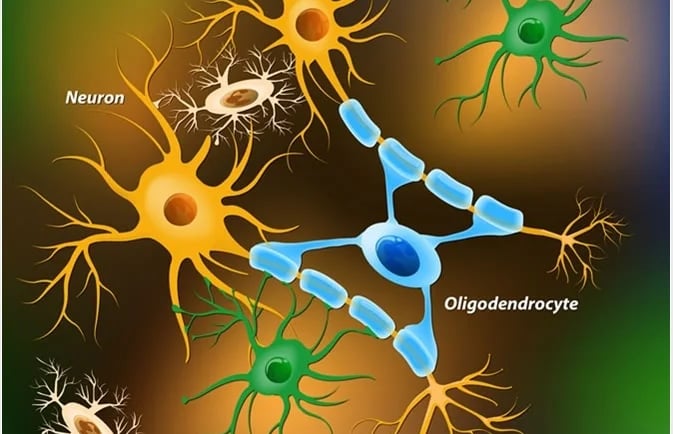Glial Cells: The Unsung Heroes of the Human Brain 🧠✨
When we think about the brain, the first image that pops into our mind is usually a vast network of neurons — those lightning-fast messengers that fire electrical impulses to control everything from our heartbeat to our thoughts. But here’s a surprising twist: neurons make up only half the story. The other half? Glial cells — the brain’s behind-the-scenes crew that silently ensures everything runs smoothly. They don’t just support neurons — they protect, feed, clean, and may even control them. If neurons are the rockstars of the brain, glial cells are the managers, technicians, and security guards who make sure the concert goes on without a hitch. And without them? The music stops.


What Exactly Are Glial Cells?
The word “glia” comes from the Greek word for “glue,” because early scientists thought these cells simply held the brain together. For decades, that’s all they were believed to do — be passive support for neurons.
But modern neuroscience has turned that assumption upside down. Today, glial cells are recognized as active, dynamic players in brain function — involved in communication, defense, repair, and even thought processes.
Fun fact: There are roughly 86 billion neurons in the human brain… but about the same number, or more, of glial cells.
Types of Glial Cells – The Brain’s Support Team
Like any great backstage crew, glial cells have specialized roles:
1. Astrocytes 🌟 – The Star Helpers
Shaped like stars, these cells regulate the chemical environment around neurons, supply them with nutrients, and clean up excess neurotransmitters. They even help repair brain damage after injury.
2. Oligodendrocytes ⚡ – The Speed Boosters
These cells wrap axons in myelin, a fatty coating that acts like electrical insulation, speeding up nerve impulses. Without myelin, communication in the brain would slow to a crawl — as seen in diseases like multiple sclerosis.
3. Microglia 🛡 – The Brain’s Immune Soldiers
Tiny but mighty, microglia act as the brain’s immune defense. They fight infections, remove dead cells, and keep inflammation under control. Scientists are finding they also influence mood and mental health.
4. Ependymal Cells 💧 – The Fluid Engineers
These cells line the brain’s ventricles and help circulate cerebrospinal fluid, which cushions the brain and removes waste.
The Secret Language of Glial Cells – Calcium Waves
Neurons communicate through electrical impulses — fast and flashy. Glial cells, on the other hand, use a more subtle system: calcium waves.
These waves move more slowly but can spread across large areas of the brain, influencing how neurons fire and how information is processed. Some scientists believe calcium waves may be a “second language” of the brain — one we’ve only just begun to decode.
Why Glial Cells Are Stealing the Spotlight in Research
For decades, glial cells were treated like background extras in the movie of the brain. Now, they’re being linked to some of the biggest questions in neuroscience:
Memory and Learning – Astrocytes may help strengthen or weaken neural connections during learning.
Brain Disorders – Abnormal glial activity is tied to Alzheimer’s, Parkinson’s, epilepsy, and depression.
Brain Development – In early life, glial cells guide neuron growth and shape brain architecture.
Injury Repair – After trauma, they rush to the scene to rebuild damaged tissue.
This means therapies targeting glial cells could open entirely new doors in brain medicine.
Glial Cells and Artificial Intelligence – A Surprising Connection
AI systems today mimic neurons, but they leave out the “support network” that makes biological brains so efficient. Researchers believe adding glia-inspired algorithms could create machines that learn faster, adapt better, and even self-repair — much like our own brains do.
Imagine an AI that doesn’t just store and process data but also maintains itself, prioritizes tasks, and cleans up its own “mental clutter.” That’s the glial cell effect.
Fun Facts About Glial Cells
Einstein’s brain had more glial cells per neuron than average — especially in regions linked to complex thinking.
Without oligodendrocytes, your thoughts would travel 100 times slower.
Microglia aren’t just defenders — they also “prune” unused connections, shaping your personality over time
Final Thoughts – The Quiet Powerhouses
Glial cells may not be in the spotlight yet, but they’re quietly rewriting what we know about intelligence, memory, emotions, and brain health..
